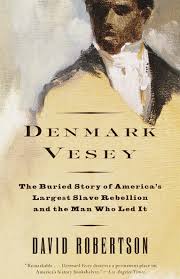Denmark Vesey’s rebellion of 1822 was very similar to the Gabriel Prosser rebellion of 1800 in the fact that his plan was exposed by two slaves, and it never happened.
Denmark Vesey was born in 1767. He was born into slavery but could purchase his freedom at the age of 32 when he won the lottery. Unfortunately, this couldn’t pay for the freedom of his wife and their children.
Denmark helped found an independent African Methodist Episcopal (AME) congregation in the city in 1818. With the support of white clergy, and over 1,848 members, the church rapidly became the second-largest AME congregation in the nation.
After gaining his freedom, Vesey continued to identify and relate with many slaves. He became set on helping enslaved people break free from the bonds of slavery. Vesey and some slaves began to plan a revolt in 1821.

Denmark recruited other slaves so the number could be able to guarantee some sort of Victory. As a preacher, Denmark could use religious classes as a font to carry out plans for this rebellion in his home. By connecting the story of God delivering the children of Israel from slavery, he was able to inspire slaves to his cause.
Vesey being a successful carpenter with a flourishing business, intended for the insurrection day to coincide with the French Revolution, which abolished slavery in Saint-Domingue on July 14, 1822, also known as Bastille Day.
The news of the plan was spread through the majorly black population of Charleston, among which was an ever-growing population of free people of colour who generally supported the movement.
Soon enough, Denmark had numerous people who had pledged to the revolt. His first plan was to attack and get weapons from the Charleston Meeting Street Arsenal, kill white slaveholders and liberate the slaves, then commandeer ships from the harbour and sail to Haiti.
Denmark fearing that as a result of the number of people that knew, word of the plot would get out, moved the date of the insurrection forward. Two slaves who were loyal to their masters and opposed to the scheme exposed the plan to their masters, who eventually alerted Charleston officials.
James Hamilton, the mayor, was informed, and he organized the city’s military to find the suspects. By the end of June, Denmark and many other suspects were arrested and held until the court heard evidence against them.
The court, however, first published its judgment of Denmark Vesey and five black slaves guilt, sentencing them to death. The six men were executed by hanging on July 2. None of the six had confessed, and each proclaimed his innocence to the end.
Wary about the legality of the court proceedings, Governor Thomas Bennett Jr and his brother in law, Justice Johnson, consulted with the Attorney General for the state, Robert Hayne. Robert Hayne responded, saying that slaves weren’t covered by the same rights as freemen.
Following the concerns of the Governor and Justice Johnson, the courts sped up the process, arresting blacks as they deemed fit. Eventually, the court found it difficult to get conclusive evidence.